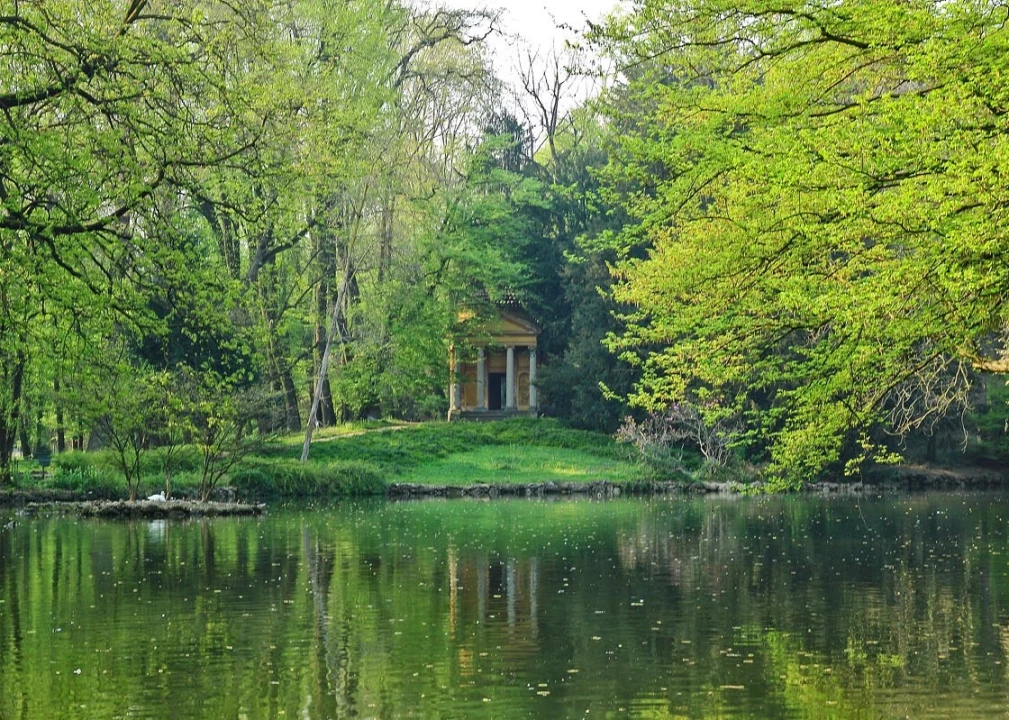It was Empress Maria Theresa of Austria who, in 1777, decided to build the Villa Reale in Monza, using a site near a small farmhouse near Monza, interesting for its particular beauty and for its strategic position along the Milan-Vienna route.
The architect Giuseppe Piermarini designed a neoclassical building with a "U" plan that followed the typological tradition of the Lombard villa, but he referred to the Royal Palace of Caserta, already a building site he followed as a pupil of the architect Luigi Vanvitelli. The garden of the villa was laid out in the neighboring lands where there were already canals and watercourses which were then used for irrigation and for the creation of a small lake. One part was designed in the French style with a central canal; two other sectors, to the north and south, were arranged in the English style with views and visual studies, ponds, caves and ruins, as the new romantic taste suggested.
In 1805 there was the arrangement, next to the existing complex, of an immense park with the aim of making it a model estate and a hunting reserve. It was the architect Luigi Canonica who took care of the landscape project, extending the estate to the Mirabella and Mirabellino villas. Towards 1807 the park was further extended to Biassono with a fence that used the remains of the walls of Monza.
The park was rich in meadows and pastures, mulberry trees for the cultivation of silkworms, vineyards, orchards, it also contained some ancient cutting woods, such as the Bosco Bello, renowned since the fourth century. These agricultural activities were carried out by farmsteads and mills inserted in the estate, of a typical Lombard architecture, carefully inserted among the vegetation according to a studied "landscape" setting.
In 19th century Brianza it was a large garden: a park without precedent and, still today, unique of its kind. In the nineteenth century the park was a precious reference point for botanical research. On one side of the estate there was an important nursery, there was a school for gardeners where high level experiments were carried out and the park also became famous and known for these activities.
The lemon house was located on the north-west side of the palace, in front of the present rose garden. Citrus fruits grew in it, while local and exotic fruits were grown along the south-west wing of the palace. Currently, still existing, it is a venue for temporary exhibitions, and has been completely renovated.
Important richness of plant species: 43 species of Quercus spp., 30 of Fraxinus spp., 22 of Prunus spp., as well as 16 species of Magnolia spp., 30 of Ficus spp., 52 of Citrus spp.




